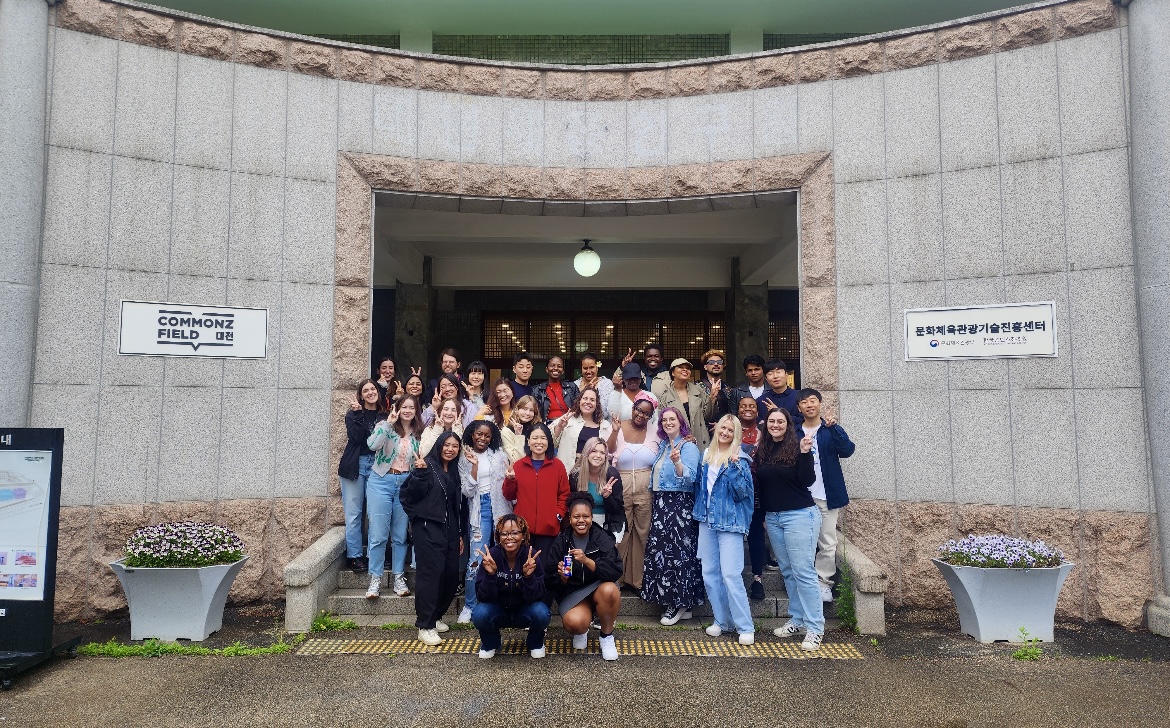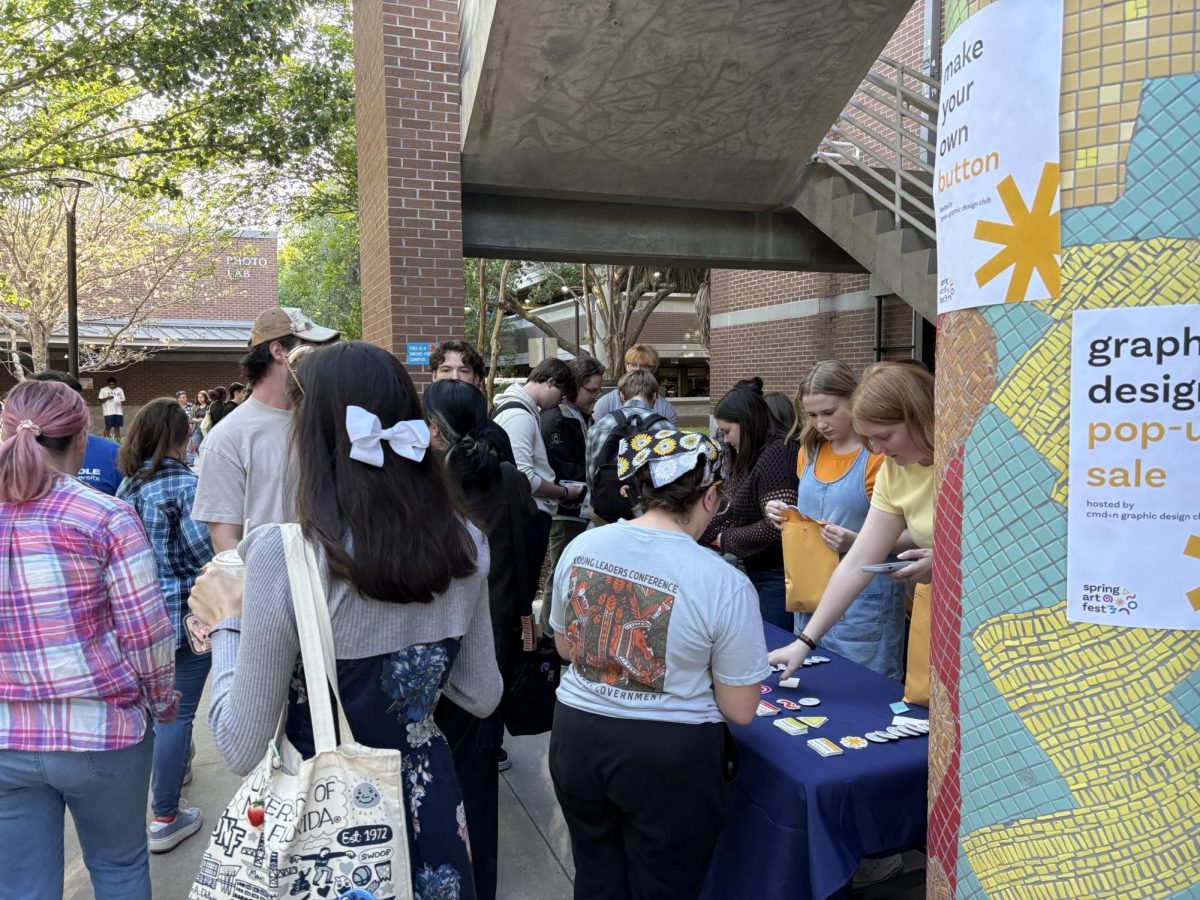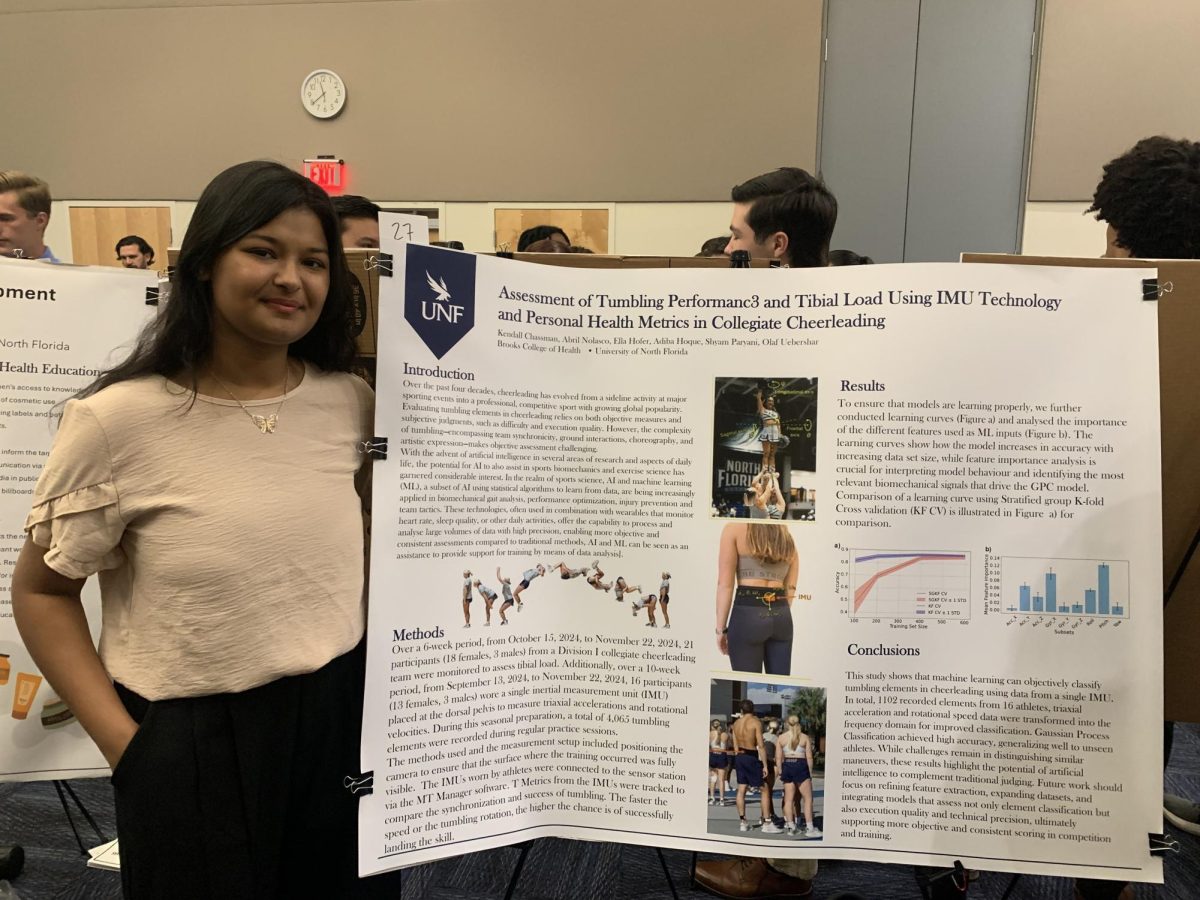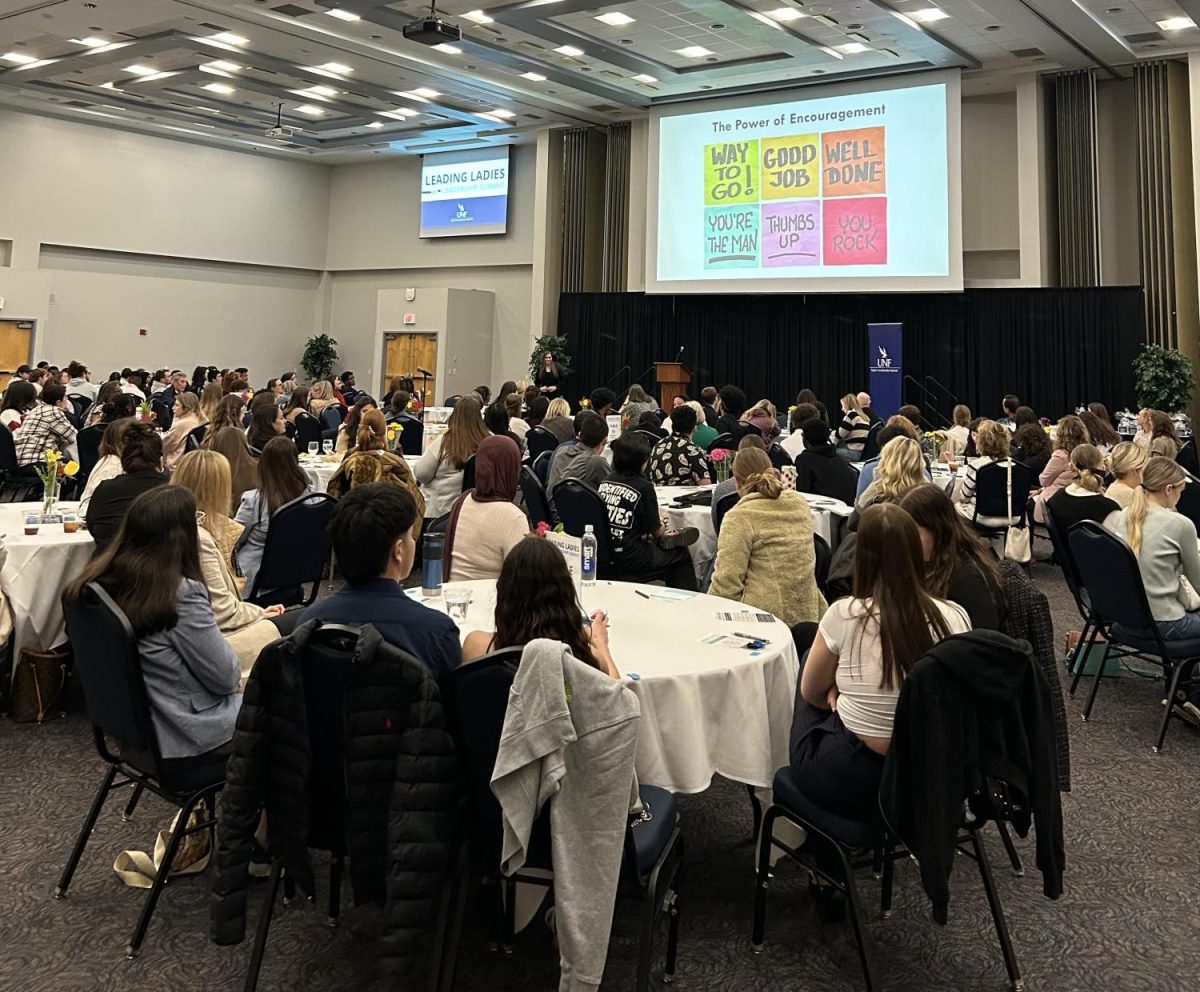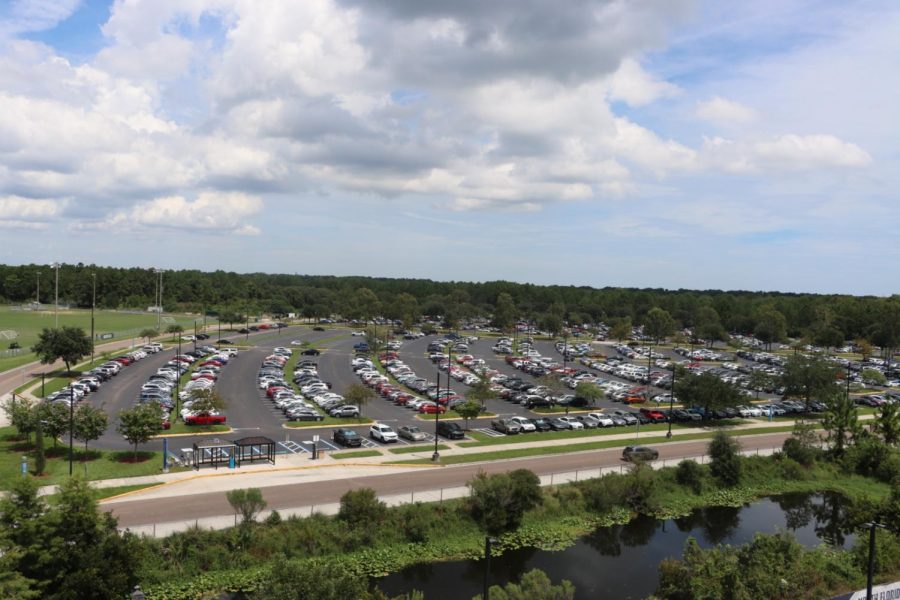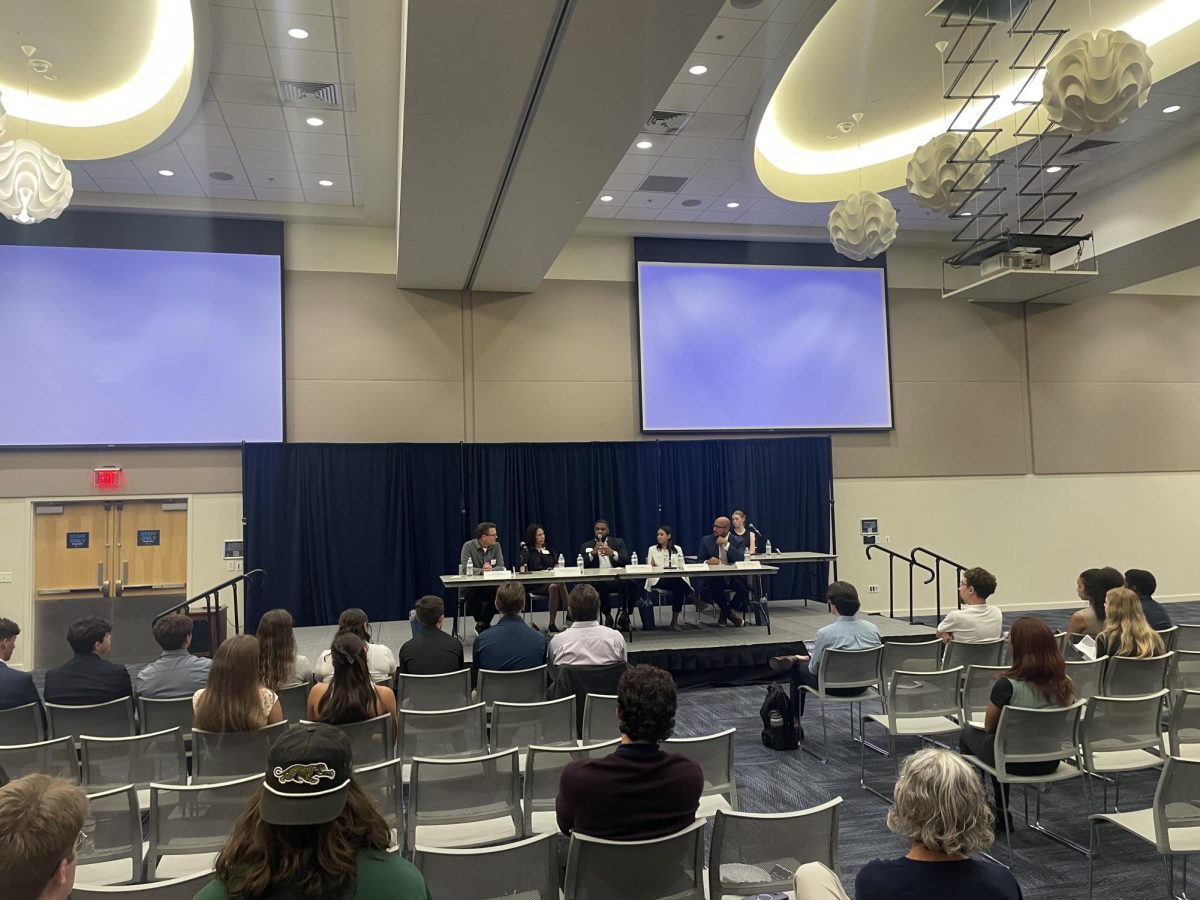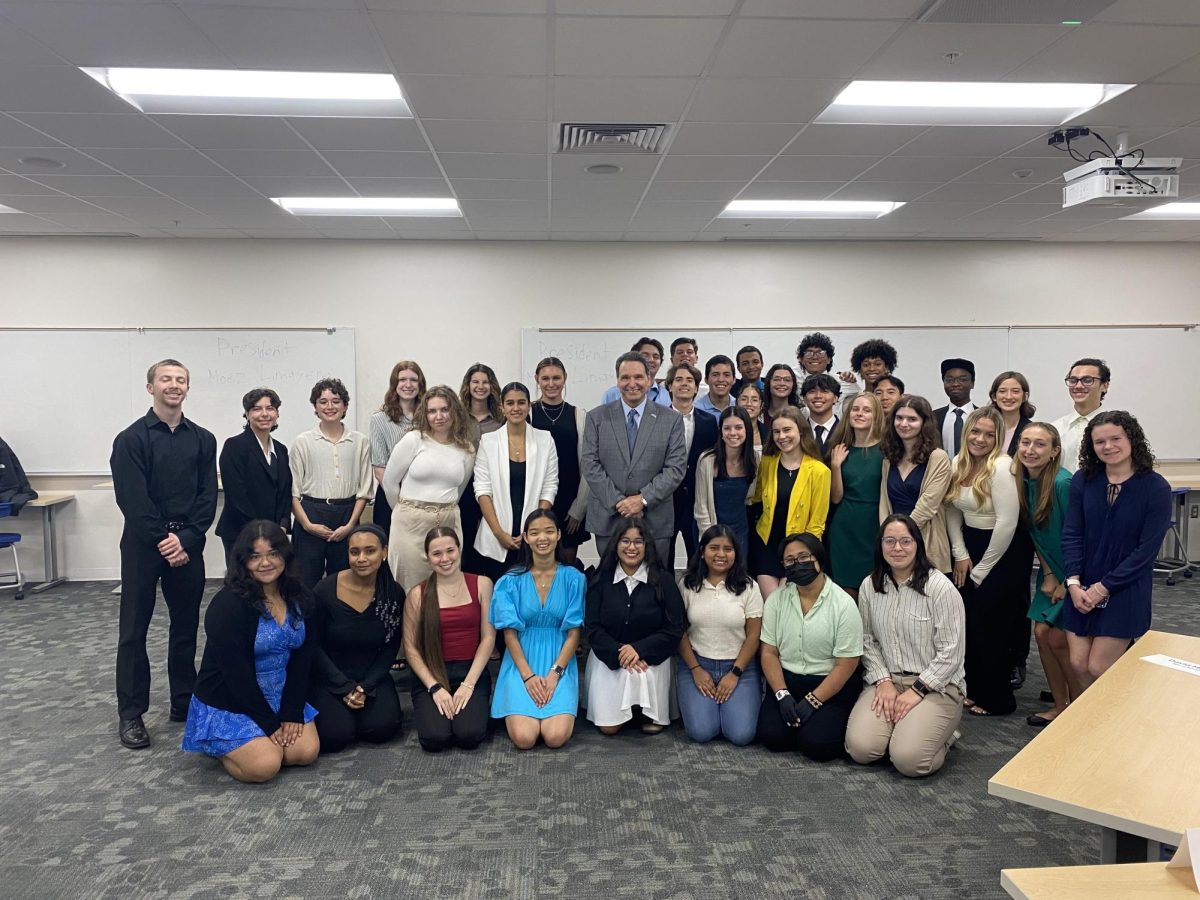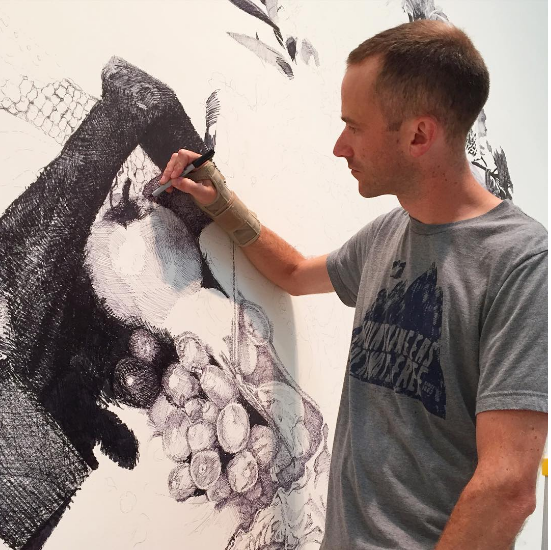
Have you ever drawn on the walls? If you had a chance to sneak in a couple of squiggles and wobbly smiley faces, you’ve probably experienced the parental repercussions of your doodling. For Boston-native and artist Ethan Murrow, his passion for wall drawing in his childhood room has led to a lifetime of projects that granted him the professionally scribble on walls into photorealistic masterpieces. Mostly done with Sharpie pens—on average of 800 of them.
Murrow is the latest artist who is having his work sponsored for the Museum of Contemporary Art’s (MOCA) Project Atrium series. Since July 5th, Murrow has been scratching away with a team at MOCA. “Plethora” is currently in the works (stop by to see watch the drawing process) and will be finished by July 16th. We picked Murrow’s brain in the following interview:
You draw some really fantastic photorealistic images. What led you into the kind of artwork?
I’ve always been interested in early photography. I studied a lot of history in college, particularly American history. I have a grandfather who is a historian and a mother who is a writer. So I grew up in a house that was filled with a house of historical images around writers who really love storytelling, and those kinds of things slowly filtered in my work.
I enjoy really developed detail and building images that are filled with bits and pieces that the viewers can discover. I like to build images that feel like a puzzle. There’s lots of corners within an image that someone can go to and find some other kind of tangent to help deepen the story or extend the narrative in some way.
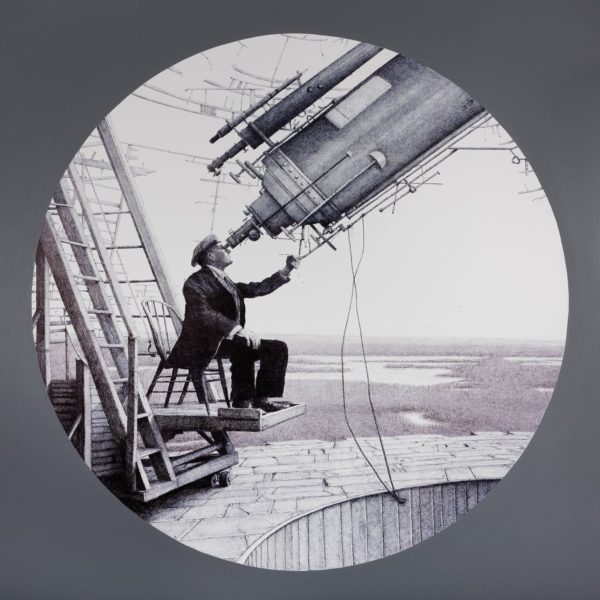
What stories are you trying to tell in your images?
I’m trying to tell stories in ways in which we occupy the environment, but to also make sure that I don’t glorify the land or glorify human action, but maybe ask questions in why we’re there and whether we’re really learning anything about the ecologies that surround us.
I’m particularly interested in the way we represent the landscape in America and we are lucky to live in a part of the world that has incredibly beautiful and dynamic landscape. I believe that we rely on a lot of our myth-making in the United States, particularly on links to the more dramatic of these landscapes.
Much of your work looks like they could be archival images. Do you base your work on archival photos of the past?
In all of the work, I’m trying to find a way to nod towards the source material that’s so important to me. I reference American landscape painting and early photography. I frequently pull stills from films that I’m interested in. So part of the reason why I’ve promoted some kind of realism in the work is that I’m seeing something in the source material.
So once you’ve found and implemented storytelling elements in your image, how does drawing them on a wall influence the the story of the image?
Some of the wall drawings are made intentionally to look like a portal or window into another world and develop an another landscape and really promote that whole level of depth.
One of the things that I’m really excited about for the piece I’m doing for MOCA is that the wall is functioning more as a backdrop. My hope is that it’s going to be this figure in front of a table that has masses of food. It represents a moment of gluttony. The wall is supposed to be a kind of empty space but hopefully, if you stand in other parts of the gallery, you can notice the figure being in a kind of deeper space.
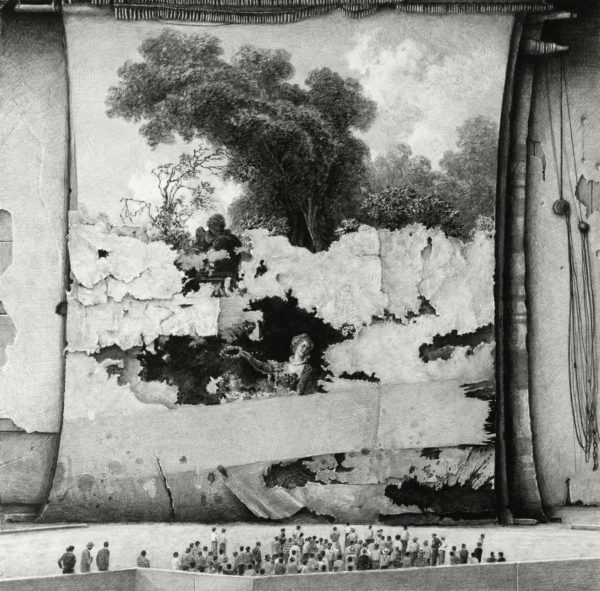
Who’s going to help you with the wall drawing project at MOCA?
There’s going to be a bunch of artists working on the wall with me. As many as four artists drawing with me. There are at least three artists who regularly work with MOCA, hanging up shows, working in the education department. All of them have their own active and exciting careers in the Jacksonville area. And then I have one guy who has worked with me before that’s coming down from New York. And I think together we’ll have a good team.
Is it hard to relinquish control when you’re working with other artists in this kind of collaborative project?
I really try to not look over people’s should while they’re creating all the time because it’s not fair to them. I do want the artists to have a role in the creation of this drawing. When I worked on a previous project with a team of artists, I was very pleased with the things my team discovered that I wouldn’t have noticed on my own. I really love that part of the work but you don’t really discover those things when you’re constantly micromanaging everyone.
What’s the toughest part about wall drawing?
When it comes to making a wall drawing, you’re spending so much time, six maybe 18 inches away from the wall, scratching away with your pen and pencil. It’s very hard to step back and see the summary of the drawing. It’s essentially a collection of random marks. Occasionally throughout the day, we’ll have to step back and make sure there’s a sensibility to what we’re doing. It takes a level of patience as you build these marks and try to collect the details. You have to trust the mock of the design and trust that it will work in the end.
—
For more information or news tips, or if you see an error in this story or have any compliments or concerns, contact editor@unfspinnaker.com.





